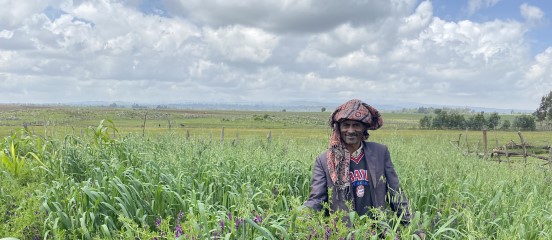The three-year drought in the Horn of Africa has devastated lives and livelihoods across the region. The UN estimates that over nine million animals have died – goats, cattle and camels that are essential assets of farming and pastoralist communities.
Supporting livelihoods that are based on healthy livestock herds during a prolonged drought is a real challenge. It’s a reminder that animal production and animal health is part of One Health – an approach that recognises the interconnectedness of the health of people, the environment and animals.In Melkana Kebele, a community struggling with poverty, women are benefitting from a revolving goat scheme which provides milk, meat, and manure and also enables them to build up small herds and sell goats to others.
The project uses multiple approaches to strengthen and diversify livelihoods in order that communities have more profitable and sustainable options available to them than encroaching into and denuding the forests and grasslands, which support the region’s unique biodiversity and regulate watersheds and river systems far into Somalia and northern Kenya, as well as providing crucial carbon sinks.
Sustainably rearing livestock is crucial in this.
Poorly managed grazing is terribly destructive to the forest, and can degrade grassland. As a result, farmers and pastoralists need to push deeper into the natural habitat to find grazing areas. This was explained to me by Ethiopian army veteran and cattle owner Gizaw Beneye.







